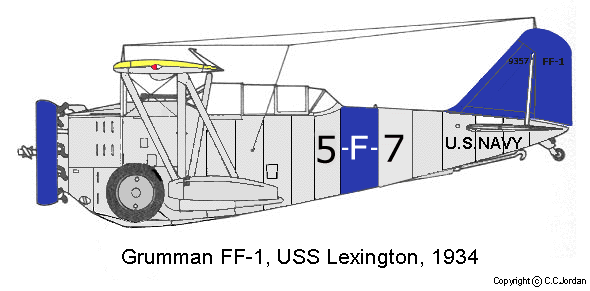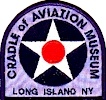
Try Amazon Audible Premium Plus and Get Up to Two Free Audiobooks
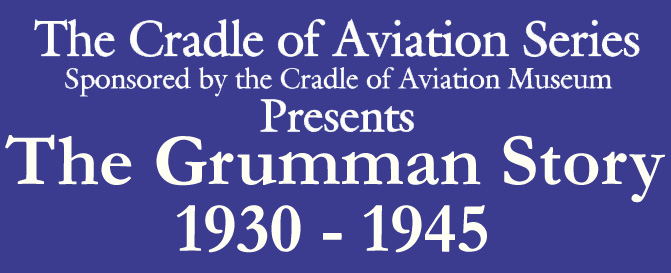


Of the several aircraft manufacturers struggling to survive in the dark economic days of the Great Depression, Grumman would set a standard of excellence that would be hard to match. How the company came to exist, and the story of its remarkable growth, resulted from the genius of three brilliant engineers and their tremendous drive to succeed.
In 1928, Grover Loening accepted an offer to sell the Loening Aircraft Engineering Company to a group of investment bankers. This would merge the assets of the Loening firm with that of the Keystone Aircraft Company. This would also entail moving the Loening operation to Keystone’s plant in Bristol, Pennsylvania.
With the move planned for late 1929, most of Loening’s employees were informed that their positions were secure if they elected to move with the company to Bristol. For many of Loening’s staff, such a move was not acceptable. Family ties, homes, and a genuine love for their communities were reasons enough not to uproot their lives and head off into the unknown. The three men responsible for actual running of Loening were less than enthused after a visit to the Keystone facility. Roy Grumman, Jack Swirbul and Bill Schwendler knew that there had to be a viable alternative. After discussions among themselves, and after obtaining the blessing and a bit of venture capital from Grover Loening, the three men set out to create their own aircraft manufacturing corporation.
To get any such venture underway, three things would be needed. Initial financing was to be supplied by the existing assets held by each man. This would be an “out of pocket” venture. Their second consideration had to be about acquiring a skilled work force. As 1929 wound down, the more skilled of Loening’s work force was approached about joining the new venture. Most of them signed on, preferring to take their chances with the new company rather than make the uncertain move to Keystone. Provided with a central core of skilled personnel, the chances of survival increased exponentially. Finally, a decision would have to be made as to which market would offer the best chance of success. Eventually, the determination was made to pursue the military market. Within weeks, this choice would be validated by the stock market crash, and the near collapse of the commercial aviation business within two years.
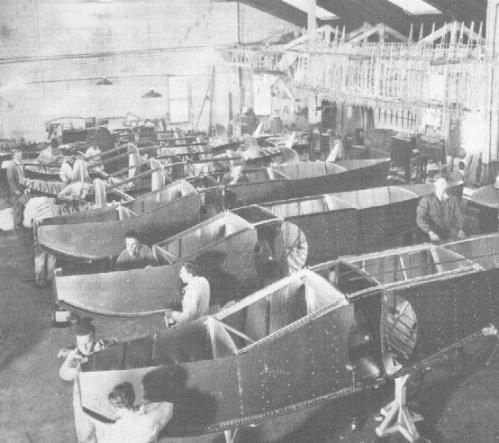
On December 5, 1929, the Grumman Aircraft Engineering Company became
a reality, at least on paper. To become a functioning operation, a
building was required. Jake Swirbul located and rented just such a
building in the town of Baldwin, out on Long Island. Formerly the
home of a small aircraft manufacturer, it had lately been used as an
automobile dealership. The structure was in poor shape, with broken
windows and junk strewn across the floor. Several fall seasons of
dried leaves littered the factory's interior in heaps. It would
require as enormous amount of time and elbow grease to get the
facility ready, but the rent was cheap and at this point in the
venture, that was paramount. Everyone would pitch in to get the
new shop prepared. On January 2, 1930, the employees reported and
Grumman Aircraft Engineering Corporation was open for business.
As the new company opened shop, the only work available was repairing Loening aircraft. However, it was readily apparent that there would not be enough repair work to keep the shop busy. A contract was negotiated with Motor Haulage Corporation for the manufacture of four aluminum truck bodies. The customer was so pleased with the quality of Grumman’s work that additional contracts were issued for many more truck and trailer bodies. Perhaps, some of the workforce tended to be a bit disillusioned at the lack of aviation work, but the truck body contracts provided income and security in the deepening national economic depression. Unlike many of their fellow Long Islanders, they at least, had a job.
Through his contacts in naval aviation, Roy Grumman learned that the Navy had become dissatisfied with the Vought designed amphibious floats fitted to their O2U-1 Scout planes. Bill Schwendler designed a new float equipped with retractable landing gear built in. After some considerable negotiations, the Navy accepted Grumman's proposal. Designated the Model A float, it was a better product than the competition offered and Grumman won contracts for the Model A and later, an improved float designated the Model B. During the discussions with the Navy over float procurement, Grumman was asked if a similar retractable landing gear could be retrofitted into their Boeing F4B-1 fighters. Roy Grumman was not especially interested in helping to improve the flying performance of their competitor’s aircraft. Instead, in March of 1930, a Grumman proposal was submitted for a new two-seat biplane fighter design with retractable landing gear. The proposal offered better performance than any fighter currently in U.S. Navy service. All that Grumman had to do now was wait.
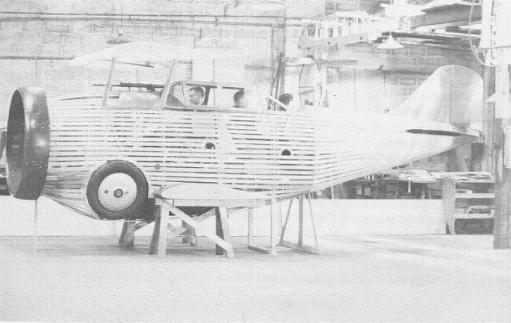
It would be a long wait. Finally, after 381 days, the navy responded
with a contract for a single fighter, designated the XFF-1. A total
of $46,875 was allocated for the new aircraft. To aid in the manufacturing
process, a mockup was constructed of wood. Drawings were generated
and the various components of the fighter were manufactured and assembly began.
Gradually, the fighter began to take on the form of an airplane. With the
fuselage completed, the wings were partially built up and installed. Not long after
construction began on the XFF-1, a second prototype was ordered by
the Navy. This was to be a Scout version of the plane, and was
designated the XSF-1. It became immediately apparent that Grumman’s
tiny shop in Baldwin was entirely too small to facilitate the building
of a second aircraft. With another contract for floats expected, the
space situation would be even more hopeless. It was time to find a new
facility. A vacant Naval Reserve hanger was discovered adjacent to
Curtiss Field out east in Valley Stream. Compared to the Baldwin shop,
the hanger was quite satisfactory, and the rent was very reasonable.
Alongside the hanger was a small building that would house the engineering
department and the corporate offices.
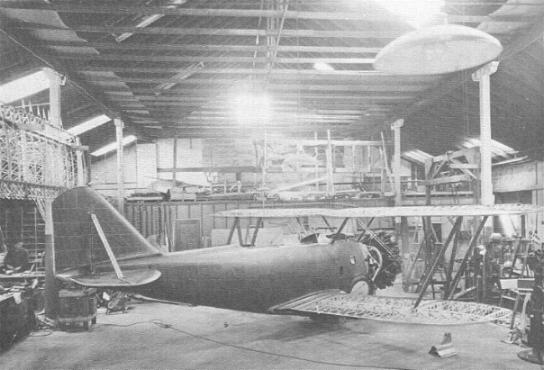
Grumman’s move to the new accommodations was made on November 4,
1931. It took three days to truck everything over and set up shop.
When the incomplete XFF-1 arrived at the hanger, work resumed at the former
hectic pace. A few weeks later, the expected contract for the Model
B floats arrived, an early Christmas gift from the Navy. Things were
rapidly winding up to a climax. With each passing day, the XFF-1 was
closer to being ready for its first flight. Tension and excitement
mingled as the last work was completed on the new fighter. It was
time to see if the efforts of the past nine months would be rewarded.
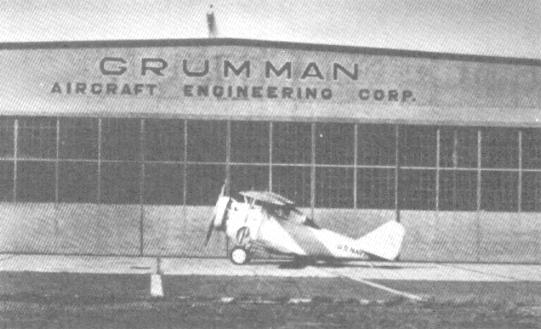
In the freezing cold morning air of December 29, 1931, the XFF-1 was rolled
out of the hanger into the morning sun. Carefully, the fighter was
subjected to an intensive pre-flight inspection. Once everything had
been checked, re-checked and then triple-checked, it was deemed ready
to fly. Test pilot Bill McAvoy climbed aboard. With the engine started,
McAvoy went through his checklist and taxied to the end of the grass
field. After a magneto check, McAvoy eased the throttle forward and
the new plane surged down the field and eased off the ground. Cranking
the landing gear wheel, McAvoy pulled up the wheels. This first
flight was supposed to last more than two hours, but within thirty
minutes, the XFF-1 was back. Since there was no radio, no one understood
why the flight had been aborted. McAvoy landed and taxied over to the hanger. At first
glance it was obvious that something was very wrong. Streaked in oil,
the fighter braked to a stop in front of the open hanger door. As soon as
the engine was shut down, Grumman mechanics swarmed all over the little biplane.
In a matter of two minutes, the problem had been discovered. The filler cap on
the oil tank had not been properly secured. Under pressure, oil was blown out and
it covered the fuselage and the cockpit glass. After cleaning the oil from the plane and topping off the oil tank,
the cap was fastened securely and McAvoy took off again to finish the test flight.
*Earlier, in August of that year, Granville Brothers Aircraft would design and fly their outrageous monoplane racer, the Gee Bee (for Granville Brothers) Super Sportster Model Z. Designed to compete in the National Air Races, the little black and yellow speed demon won every event it started, including the prestigious Thompson Trophy race. Remarkably, the tiny and over-powered plane would eventually attain a speed of 314.47 mph in November of 1931. Beginning in 1929, civilian racing planes would badly out-speed the land planes of the world’s military forces. This trend would continue until the middle 1930s. At the beginning of World War Two, many of the fighters in service with world’s Air Forces could not achieve the speed of the 1931 Gee Bee. Yet, the Model Z was a true contemporary of the FF-1. Ironically, the designer of the Model Z, Robert Hall, would later be hired by Grumman and fly as the company’s chief test pilot and eventually, Vice President of Engineering. Hall retired in 1970.
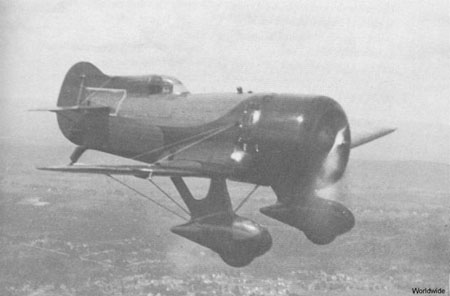
While the Navy continued testing of the XFF-1, Grumman was busy
constructing the XSF-1, which would fly in August, 1931. Shortly
thereafter, the Navy awarded Grumman with a contract to build the
XJF-1 Amphibian prototype. By the end of the year, the Navy accepted
the XFF-1 and issued a contract for 27 FF-1 fighters. With contracts
in hand totaling nearly $750,000, Grumman was in the aircraft business
for the foreseeable future. Ultimately, 34 SF-1 Scout fighters would
also be ordered. Soon, work would begin on the XJF-1 and once again,
Grumman would out-grow its facility. Relocating to Farmingdale,
Grumman would occupy a bigger building and share the local airfield
with another struggling aircraft manufacturer, Seversky. With the
coming of 1933, Grumman was about to explode in growth.
